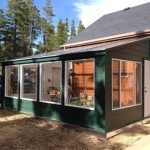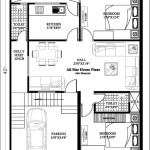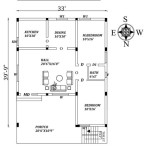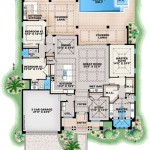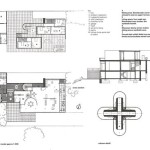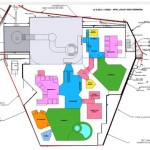Small House Plan Kerala: Maximizing Space and Minimizing Cost
Kerala, known for its lush greenery and unique architectural styles, presents a distinctive context for residential design. The rising cost of land and construction materials has led to an increasing demand for small house plans that effectively utilize space while adhering to budgetary constraints. This article explores the key considerations and prevalent trends in small house planning in Kerala, offering insights into creating functional, aesthetically pleasing, and cost-effective homes. The focus will be on understanding design principles, material selection, and innovative solutions that cater to the specific needs of the Kerala lifestyle.
Small house plans in Kerala are not simply about reducing the square footage; they are about optimizing the available space to create a comfortable and efficient living environment. This requires careful consideration of the layout, the integration of natural light and ventilation, and the use of multi-functional spaces. The architectural style often incorporates traditional Kerala design elements, such as sloping roofs, courtyards (nalukettu), and ample verandahs, adapted to fit within the smaller footprint. Modern design influences are also increasingly prevalent, resulting in a fusion of styles that prioritize functionality and aesthetics.
Understanding the climatic conditions in Kerala is crucial for effective house planning. The state experiences high humidity and rainfall, which necessitates designs that promote ventilation and prevent moisture build-up. Proper orientation of the house can maximize natural light and minimize heat gain, reducing the reliance on artificial lighting and cooling systems. Rainwater harvesting and other sustainable practices are also becoming increasingly popular, contributing to both environmental responsibility and cost savings.
The selection of materials is a critical factor in determining the overall cost and longevity of a small house. Locally sourced materials, such as laterite stone, are often preferred for their durability and thermal properties. Concrete blocks are also a common choice due to their affordability and ease of construction. The use of recycled or repurposed materials can further reduce costs and promote sustainability. The choice of roofing material is particularly important, with options ranging from traditional clay tiles to modern metal sheets, each offering different advantages in terms of cost, durability, and aesthetic appeal.
Key Point 1: Optimizing Space Through Efficient Layout Design
Efficient layout design is paramount in small house plans. The goal is to maximize the usable space while minimizing wasted areas. This often involves adopting open-plan living arrangements, where the living room, dining area, and kitchen are integrated into a single, flowing space. This not only creates a sense of spaciousness but also promotes better interaction and communication within the family. The strategic placement of furniture and fixtures is also crucial, ensuring that each item serves a specific purpose and does not obstruct the flow of movement.
Multi-functional spaces are another key strategy for optimizing space in small houses. A guest room can double as a home office, or a dining area can be converted into a study space when not in use. Built-in storage solutions, such as wall-mounted shelves and under-staircase storage, can help to keep clutter at bay and maximize the available floor area. Vertical space should also be utilized effectively, with high ceilings creating a sense of spaciousness and allowing for the installation of lofts or mezzanine levels for additional storage or living space.
The design of the bedrooms should prioritize functionality and comfort. Compact bedrooms can be made more comfortable by incorporating ample natural light and ventilation, as well as built-in wardrobes and storage solutions. The size and layout of the bathrooms should also be carefully considered, with efficient use of space being a primary concern. Wall-mounted fixtures and corner sinks can help to save space, while strategically placed mirrors can create the illusion of a larger room.
The integration of indoor and outdoor spaces is a common feature in Kerala house designs. Verandahs and courtyards provide a transition zone between the interior and exterior, allowing for natural light and ventilation to penetrate the house. These spaces can also serve as outdoor living areas, providing a place to relax and enjoy the surrounding greenery. The careful placement of windows and doors can further enhance the connection between the indoor and outdoor environments, creating a more open and airy feel.
Key Point 2: Cost-Effective Material Selection and Construction Techniques
Material selection significantly impacts the overall cost of a small house. Utilizing locally sourced and readily available materials can drastically reduce transportation costs and support local industries. Laterite stone, a common building material in Kerala, is known for its durability and thermal properties. Concrete blocks are also a popular choice due to their affordability and ease of construction. Exploring alternative building materials, such as stabilized mud blocks or bamboo, can further reduce costs and promote sustainable building practices.
Construction techniques also play a crucial role in cost management. Simple and straightforward designs can reduce construction time and labor costs. Minimizing complex architectural features and ornamentation can also help to keep costs down. Prefabricated elements, such as roof trusses and wall panels, can be used to speed up the construction process and reduce waste. Proper planning and coordination between the architect, engineer, and contractor are essential for ensuring that the construction process is efficient and cost-effective.
The design of the foundation and roof should be carefully considered to minimize costs. A simple foundation design, such as a strip footing, can be adequate for a small house. The roof design should be optimized for drainage and durability, with a focus on using cost-effective materials and minimizing the need for complex structural supports. The use of lightweight roofing materials, such as metal sheets, can reduce the load on the structure and further lower costs.
Plumbing and electrical systems should be designed with efficiency in mind. Minimizing the length of pipe runs and wiring can reduce material costs and labor costs. Energy-efficient fixtures and appliances should be selected to reduce energy consumption and lower utility bills. Solar water heaters and other renewable energy technologies can also be incorporated to further reduce energy costs and promote sustainability.
Key Point 3: Incorporating Traditional Kerala Design Elements with Modern Functionality
Traditional Kerala architecture is characterized by its distinct features, such as sloping roofs, courtyards, and verandahs. These elements are not only aesthetically pleasing but also serve practical purposes, such as providing protection from the rain and promoting natural ventilation. Integrating these traditional elements into small house plans can create a sense of cultural identity and enhance the overall livability of the home. However, these elements must be adapted to fit within the smaller footprint and modern lifestyle requirements.
Sloping roofs are a hallmark of Kerala architecture and are essential for effectively draining rainwater. The pitch of the roof should be carefully considered to ensure adequate drainage and prevent water damage. Traditional clay tiles are a common roofing material, but modern alternatives, such as metal sheets, can also be used. The roof overhang should be sufficient to provide shade and protect the walls from the rain.
Courtyards, or nalukettu, are a central feature of traditional Kerala houses. They provide a source of natural light and ventilation, as well as a peaceful and private outdoor space. In small house plans, the courtyard may be scaled down, but its fundamental function remains the same. A small courtyard can be incorporated into the center of the house, or a side courtyard can be created adjacent to the living room or dining area. The courtyard can be planted with trees and shrubs to create a lush and inviting space.
Verandahs are another essential element of Kerala architecture. They provide a transition zone between the interior and exterior, as well as a comfortable place to relax and enjoy the surrounding scenery. In small house plans, the verandah may be narrower than in traditional houses, but it can still serve as a valuable outdoor living space. The verandah can be furnished with chairs and a table, or it can be used as a space for gardening or other outdoor activities.
Modern functionality can be seamlessly integrated with traditional design elements. Open-plan living arrangements, modern kitchen appliances, and energy-efficient lighting can be incorporated into a house that still retains its Kerala identity. The use of modern materials, such as glass and steel, can be combined with traditional materials, such as wood and laterite stone, to create a unique and aesthetically pleasing design. The key is to strike a balance between tradition and modernity, creating a home that is both functional and culturally relevant.

Pin On Small House Plans

Six Low Budget Kerala Model Two Bedroom House Plans Under 500 Sq Ft Small Hub

Small House Plans In Kerala 3 Bedroom Keralahouseplanner

Four Low Budget Kerala Style Three Bedroom House Plans Under 750 Sq Ft Small Hub

Pin On Small House Plans

3 Bedroom Home Design With Free Plan Suitable For Small Narrow Plot Kerala Planners

743 Sq Ft 3 Bedroom Single Floor House Plan And Elevation Layout Plans Small Design

3 Bedroom Beautiful Villa For 36 Lakhs In 1939sqft Free Plan Kerala Home Planners

Pin On Small House Plans

5 Bedroom Home In 2500 Sqft With Free Plan Suitable For Small Plot Kerala Planners

